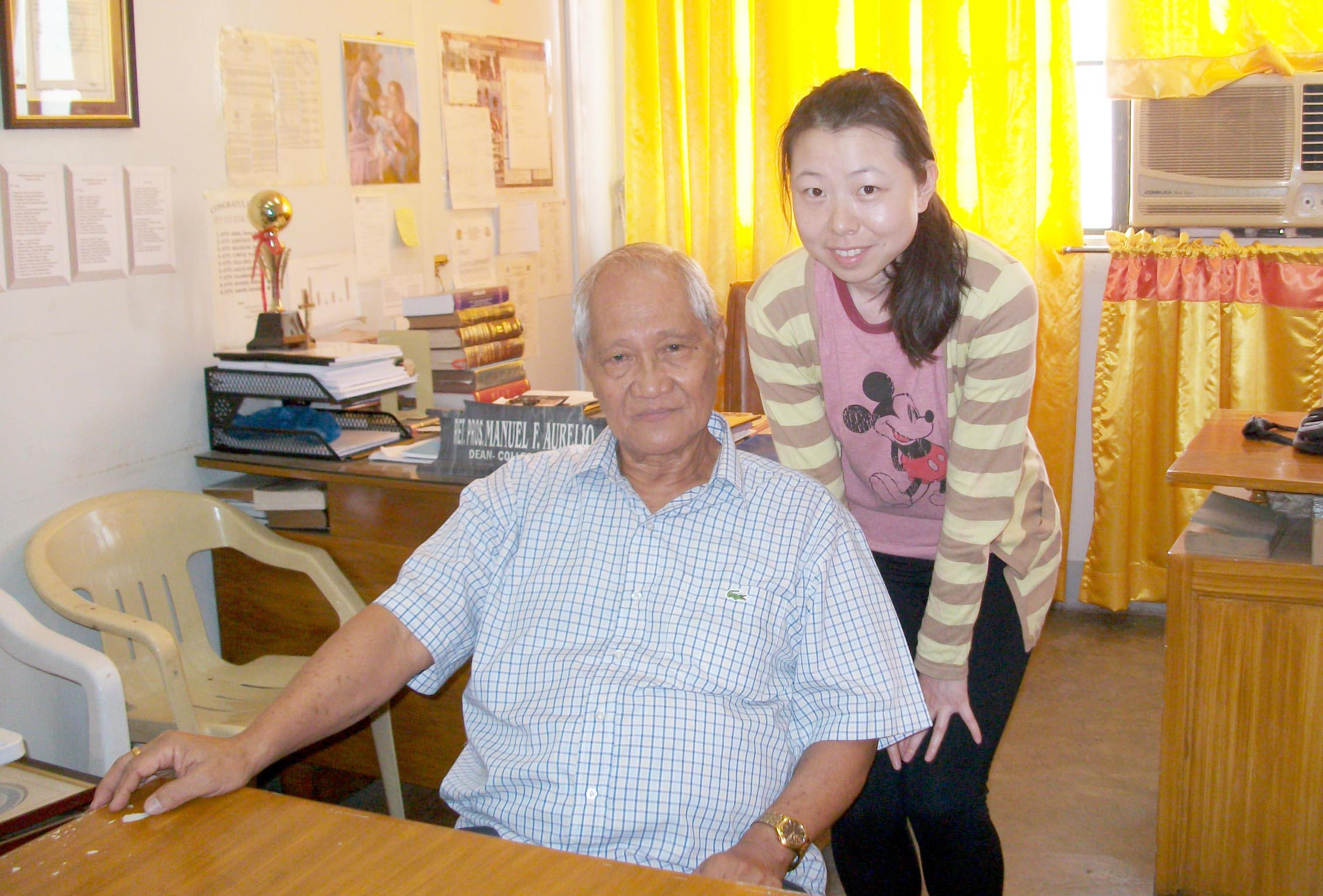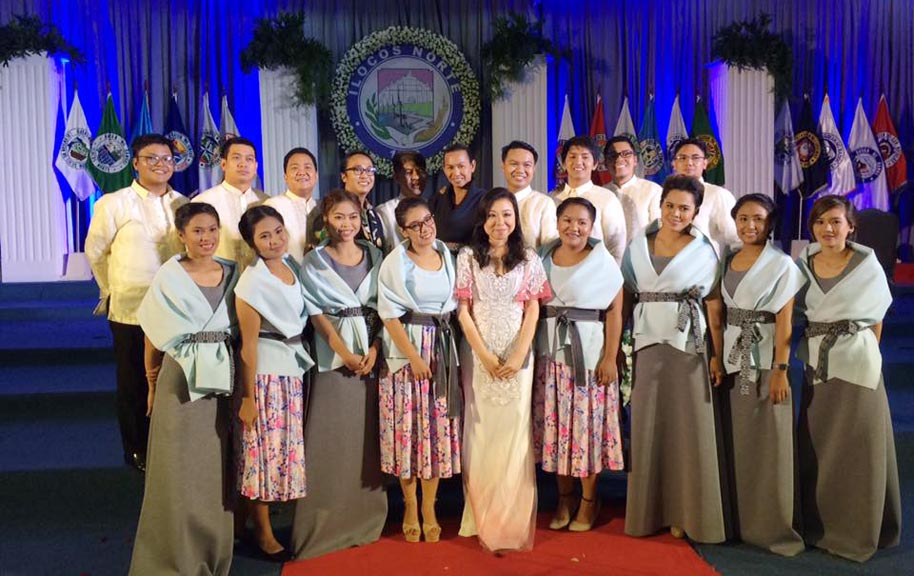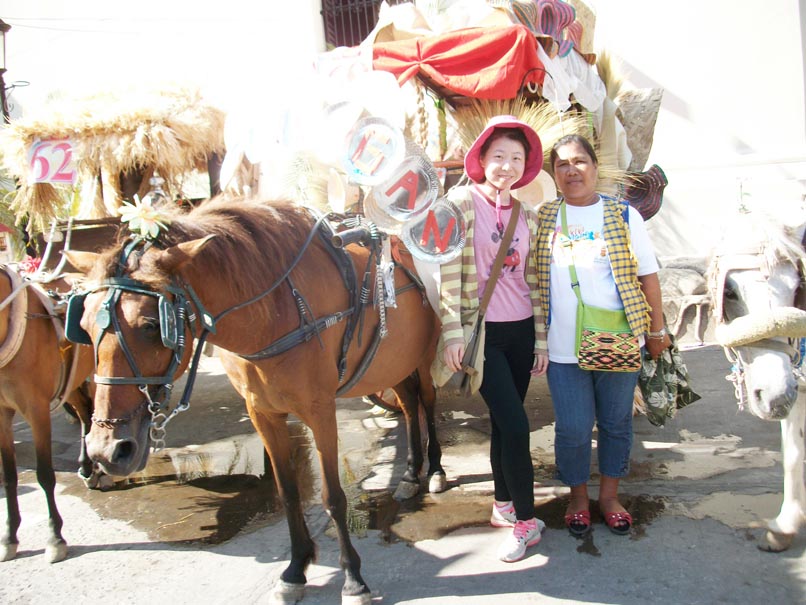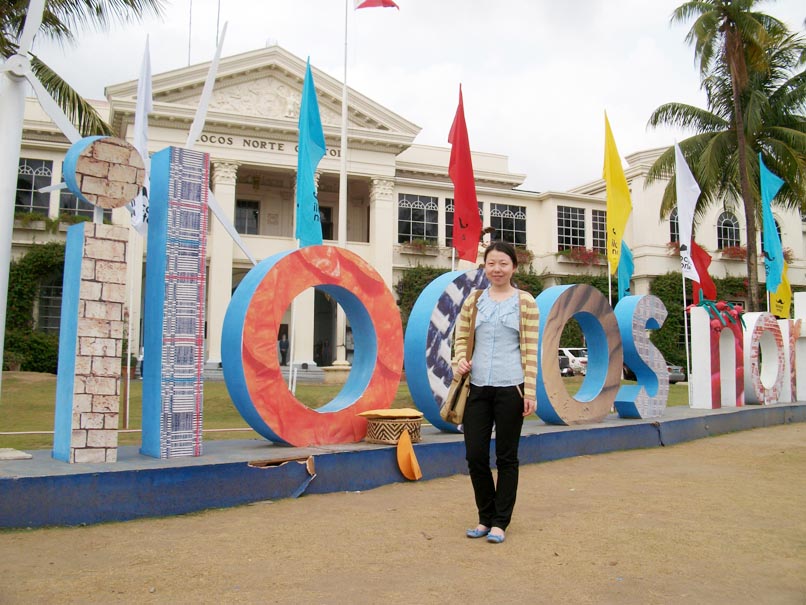Ed’s note: On the eve of Kaisa Para Sa Kaunlaran’s 29th birthday, the author reflects on her relationship with the organization and about her fieldwork in the Philippines. This highlights a lesser-known facet of Kaisa’s work in promoting better understanding of the Philippines and Filipinos among China’s students.
Last April to July, I spent a memorable three months doing fieldwork in Laoag, Ilocos Norte.
There are not enough words for me to express my gratitude. Besides Kaisa Para Sa Kaunlaran, former tourism secretary Gemma Cruz-Araneta also introduced me to some of her acquaintances.
My accommodations at the University Hotel of Northwestern University in Ilocos was facilitated quite circuitously – Meah Ang See called up a friend, who called his uncle, who called up the university president Atty. Manuel Aurelio.
Through Teresita Ang See, John Chua and Jimmy Lu of the Filipino-Chinese Chambers of Commerce and Industry Inc. in Ilocos ably assisted me during my time there.
My research is on “Beauty and Power: Town Fiestas in Ilocos Norte, the Philippines.”
April and May are peak seasons for fiestas. Since the beginning of the rainy season in July, there were fewer fiestas, which allowed me to focus more on interviewing people.

During the three months of fieldwork, I went to around 10 fiestas in different cities and towns, mainly in Ilocos Norte, but a few in Ilocos Sur.
Part of what I have seen from the fiestas confirmed what I have read from previous studies, but I gained more inspiration from the field, which I could not have gotten from archival research. The field is lively and full of surprises.
For example, my introduction to town fiestas started with the fact that Filipinos are obsessed with beauty pageants. In the town fiestas I went to, I saw different kinds of pageants – pageants for girls, children, gays, senior citizens.
They are completely different from the pageants that judge solely on a woman’s body, and would trigger criticisms in many parts of the world.
Here, I saw a positive energy to express oneself, a unique way to socialize, to flaunt one’s assets (in a good way).
I also perceived a pattern in town fiestas: they usually last from three to seven days (city fiestas could take a month); each day or night is dedicated to different groups such as Women’s Day, Dep-Ed Night, Balikbayan Night, LGBT Night and others.
I also obtained different views towards fiestas. Some absolutely love them, while others criticize the long fiestas that are extravagant and superficial. These observations will be the foundation for my dissertation as well as serve as valuable first-hand materials.
Northwestern University helped me get in touch with many interviewees, including university professors and staff, provincial tourism officers, and women’s organization leaders. These welcoming people invited me to join in their activities as part of my experience of local culture.
From what I gathered from both participatory observation and random interviews, I was able to expand the concept of cultural performance in my notes for further exploration.

The cultural performance, in a broad sense, contains the appreciation of beauty, the aesthetics of the female body. The beauty pageant is an extravagant icon of festivals, but behind the scenes, it is the negotiation of power that intertwines the various activities.
For example, popularity contests have a long history in Ilocos. It is a competition wherein the girl who raises the most money gets to be crowned queen.
Tracing the threads of power in a Foucaultian (discourse analysis) way, it leads us to an understanding of how women can aspire to powerful positions through political oligarchies.
Similarly in gay pageants, which contains abundant performativity, the socially tolerated but not widely accepted bakla reach their self-transformation by putting on female appearances, with their highly acclaimed abilities to “make things beautiful.”
Last but not least, in Balikbayan Nights, we see a cultural institution not decreasing in the face of modernization, but rather thriving as a result of capital infusion by overseas workers. The perspective of beauty and power is chained to many social phenomena in contemporary Philippines.
Although it was not my first time in the Philippines, Ilocos Norte was different from my previous 2009 experience in Manila. For the first time, I saw the vast tobacco lands and rice fields of the probinsiya. I got to know how the local government unit works, and got a sense of local politics.
As I spent more time with Ilocanos, I felt the pride they have for their leaders, their historically migratory past, and their unique culture. It is here that the regionalism and diversity of Philippine society struck me for the first time. In the past, I have always seen lowland Filipinos or Catholic Filipinos as a whole, while in fact, generalizations can be dangerous.

Another realization was that there was a different perspective on the Marcos era, a different narrative of a common history: people in Ilocos Norte spoke highly of the Marcos family, which was a striking contrast to what I read and heard in Manila, even with what had been written in the history books.
It suddenly occurred to me how I have always taken one narrative for granted and never bothered to question it. In Ilocos, I was accepted as part of a small society where almost “everybody knows everybody.” Small towns have their own charm. I seized every opportunity to talk to guards, tricycle drivers, calesa drivers and small vendors, to see what their lives were like.
I went to Badoc, Pinili, Paoay… about 10 municipalities in Ilocos Norte, by public transportation. I tried to fit into a new environment as much as possible, although my fair complexion and singkit eyes easily betrayed me. In Ilocos, I sensed an unexpected intimacy among people, unlike in the metropolitan areas.
Until now, I still recall people’s warm smiles and the total strangers with whom I shared quick but interesting conversations. I was touched by how open and friendly people were.

I also happened to catch the May national and local elections during my stay in Ilocos. I felt the people’s eagerness for change and strong hopes for a better future.
They talked about candidates enthusiastically, whether during lunch break or at bus terminals.
I was never into politics before, but maybe because I was in the Philippines during the elections, now I care about future paths more than ever, and of course, a better relationship between China and the Philippines.
From where I came, many people think of the maritime dispute when it comes to the Philippines, especially in recent years. This is also the case vice versa.
People from both countries are overwhelmed by the media’s concentrated coverage of certain issues. When a Filipino friend I encountered learned that I was Chinese, the first question that she immediately asked (jokingly) was, “Who do you think those islands belong to?”
We both laughed. I did not know what to say but only wished next time I come back here, there would be no such question asked.
I admit that my fieldwork in Ilocos was not entirely perfect. Occasionally, I got stood up by a friend, or my interview appointment got canceled several times. It also took me a very long time to do visa-related paperwork.
However, compared to the highly centralized Metro Manila that I had seen seven years ago, I discovered another side of the Philippines, which I still love.
I had an epiphany of what the real love of a place is: it is not about how perfect it looks; it is rather about the love you have for it after you have seen the good and the bad.
Eventually, it boils down to the love of its people, even though you know they are not perfect. The more I get to know about this country, the more real it gets. My curiosity and passion grow stronger every day. — First published in Tulay Fortnightly, Chinese-Filipino Digest 29, no. 6 (August 23-September 5, 2016): 8, 11.




